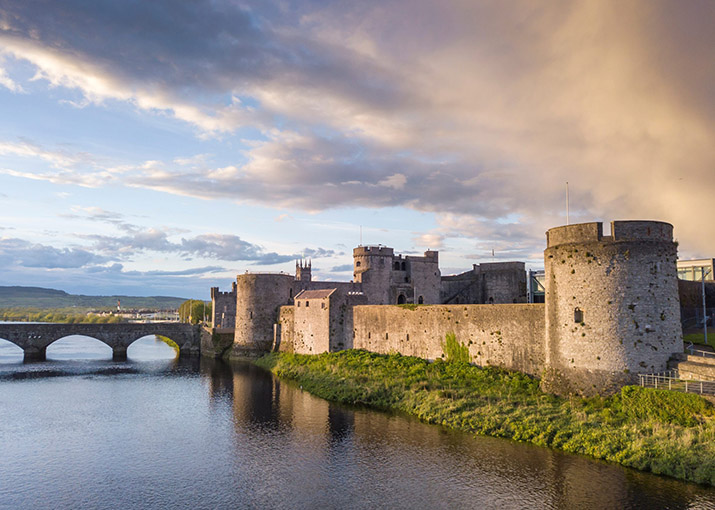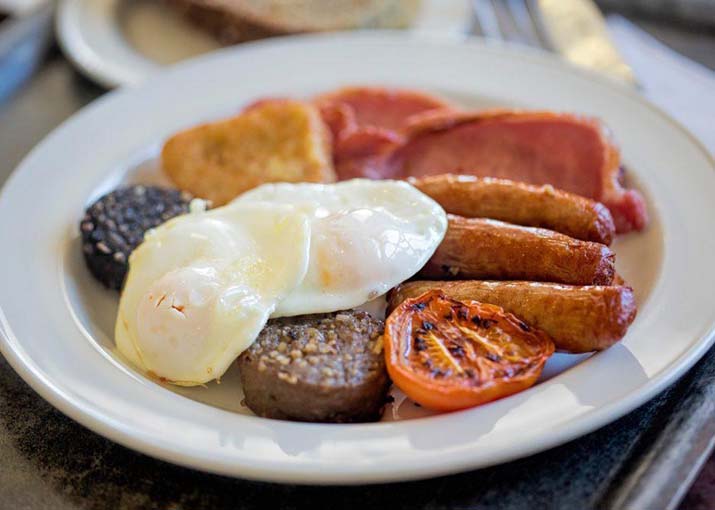Kew Gardens, officially known as the Royal Botanic Gardens, Kew, is a paradise for nature enthusiasts and a treasure trove of biodiversity. Located in southwest London, this UNESCO World Heritage Site covers a staggering 326 acres, making it one of the largest and most diverse botanical gardens in the world. I embarked on a day-long adventure to explore the hidden gems of Kew Gardens on foot, uncovering its rich history, stunning plant collections, and much more.
The History of Kew Gardens
Before we dive into the beauty of the gardens, let’s explore the fascinating history that underlies Kew’s existence.
Kew’s roots can be traced back to the early 18th century when it was a private garden belonging to the royal family. Founded in 1759 by Princess Augusta, Kew began as a nine-acre garden attached to the Kew Palace. Over the years, it expanded and evolved, thanks to the contributions of various monarchs and botanists, most notably King George III and Sir Joseph Banks.
During my exploration, I was awed by the historic Kew Palace, which remains as a testament to the garden’s royal legacy. The Palace offers a glimpse into the lives of George III and Queen Charlotte and is a remarkable blend of architectural beauty and historical significance.
The Unique Plant Collections
Kew Gardens boasts an astonishing variety of plant species, from the exotic to the familiar. One of the most captivating aspects of Kew is its diverse plant collections, each with its own story to tell.
- The Palm House: My journey commenced with a visit to the iconic Palm House, a stunning Victorian glasshouse that houses a remarkable collection of palms and other tropical plants. The humidity inside, coupled with the verdant foliage, transported me to distant tropical rainforests. It’s a haven of lush, green, and serene beauty, where I marveled at the towering palms and felt a sense of escape from the urban hustle.
- The Princess of Wales Conservatory: This glasshouse is a botanical wonder, divided into ten climatic zones. I was enthralled by the vivid colors and unique shapes of cacti and succulents in the Desert Zone. The Orchid Zone, with its vibrant blooms, felt like a paradise for flower enthusiasts. As I strolled through this sensory overload of botanical marvels, I couldn’t help but be struck by the astounding diversity of our planet’s plant life.
- The Temperate House: The largest surviving Victorian glasshouse in the world, this conservatory is home to temperate plants from various regions. Walking through the elegant iron and glass structure, I admired a host of rare and endangered species. It felt like stepping into a living time capsule, preserving the Earth’s botanical heritage.
- The Alpine House: For lovers of alpine plants, this glasshouse is a hidden gem. It offers an opportunity to see delicate mountain plants from around the world up close. The precise conditions within the house make it an ideal environment for these fragile species to thrive. The Alpine House is a testament to the dedication of Kew in preserving the most delicate and rare plant species.
- The Waterlily House: As I wandered into this aquatic haven, I was mesmerized by the enchanting beauty of water lilies and other aquatic plants. Monet himself would have felt at home in this exquisite setting. The tranquility and grace of the water lilies in this house transported me to a serene world of natural art.
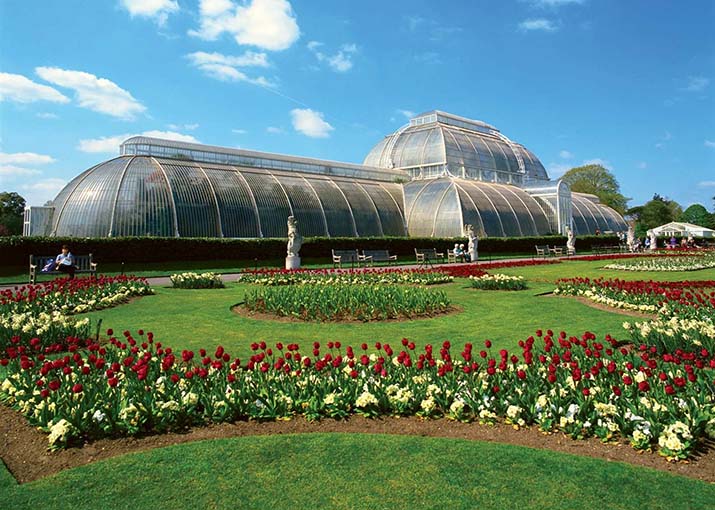
The Treetop Walkway
One of the highlights of my visit was the Treetop Walkway, an innovative structure that allows visitors to explore the canopy of trees from an elevated perspective. This metal walkway, which rises 18 meters above the ground, provides a unique vantage point to observe the gardens and appreciate the majesty of the towering trees.
I strolled along the walkway, feeling like a modern-day Tarzan, and marveled at the views of the gardens and the surrounding landscape. It was a truly exhilarating experience to be so close to nature, with the canopy rustling in the breeze and the calls of birds filling the air. It gave me a renewed sense of appreciation for the complexity and interconnectedness of the natural world.
The Wildlife of Kew Gardens
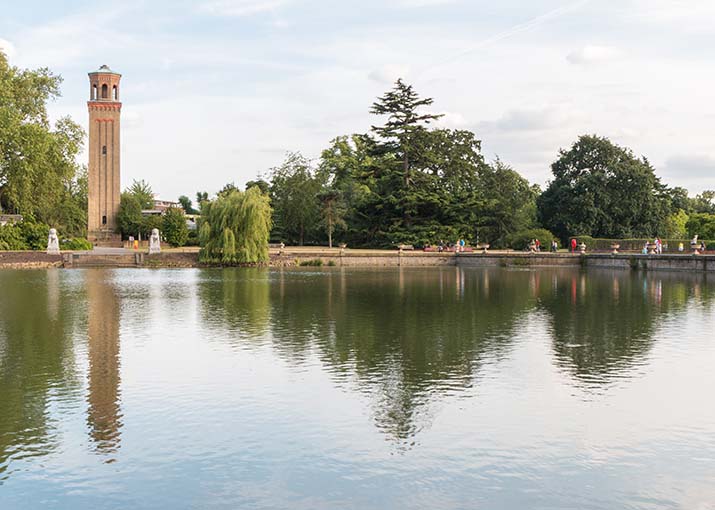
Kew Gardens isn’t just about plants; it’s also a sanctuary for wildlife. During my hike, I had several delightful encounters with the animals that call this place home.
- Birds: Kew Gardens is a haven for birdwatchers. I spotted various bird species, including robins, ducks, swans, and the occasional kingfisher. The serene lakes and lush greenery provide an ideal habitat for these feathered friends. As I sat by the lakeside, I was serenaded by the soothing melodies of these birds, a reminder of the harmony between nature and music.
- Squirrels: The resident grey squirrels at Kew are known for their cheeky antics. I watched as they darted up and down trees, foraging for food. If you’re lucky, you might even catch one in a playful acrobatic display. The squirrels brought a sense of whimsy and liveliness to my visit, a reminder that even the smallest creatures play a vital role in the ecosystem.
- Insects: Kew is a paradise for insect enthusiasts as well. The diverse plant life attracts a wide variety of insects, from bees and butterflies to beetles and dragonflies. The gardens are a haven for pollinators, contributing to the conservation of local ecosystems. I found myself captivated by the intricate beauty of these tiny creatures, each one a testament to the delicate balance of nature.
- Fish: Kew’s ponds and lakes are teeming with fish, and you can often see them swimming just beneath the water’s surface. The reflections of trees and flowers on the water create a picturesque scene. I spent a serene moment by the water’s edge, watching the fish glide effortlessly through their underwater world, a reminder of the hidden treasures beneath the surface.
The Art and Sculptures
Kew Gardens is not only a place of natural beauty but also a gallery of art and sculptures. Throughout the gardens, you’ll discover various pieces that blend harmoniously with the surrounding flora. Some notable works of art include:
- The Marianne North Gallery: This gallery is dedicated to the works of Marianne North, a prolific Victorian artist and plant hunter. Her intricate botanical paintings showcase the incredible diversity of plants found around the world. As I gazed upon her paintings, I felt a deep sense of gratitude for the pioneers who dedicated their lives to preserving the beauty of the natural world.
- The Hive: A mesmerizing aluminum structure that represents a beehive. Inside, you can listen to a soundscape that mimics the activity of bees, providing a unique multisensory experience. The Hive was a reminder of the intricate and vital role that bees play in pollination and the food chain, a connection between the human world and the natural world.
- The Chihuly Glass Sculptures: World-renowned glass artist Dale Chihuly’s sculptures are strategically placed throughout the gardens. These vibrant, intricate glass creations complement the natural beauty of Kew, adding a touch of contemporary art to the traditional landscape. The Chihuly sculptures were a vivid celebration of the creative spirit, a reminder of how art and nature can coexist and inspire one another.
The Kew Explorer and Tram
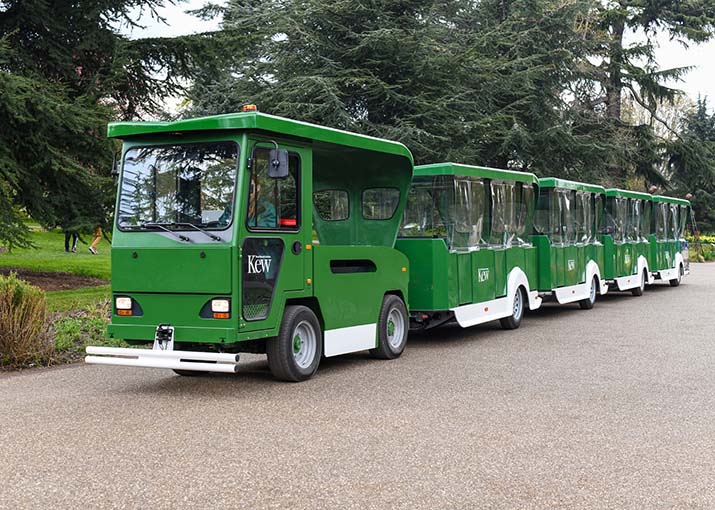
For those looking to cover more ground with less legwork, Kew Gardens offers the Kew Explorer and Tram service. This hop-on, hop-off tram system provides an excellent way to navigate the expansive gardens efficiently. It stops at key attractions and offers informative commentary along the way.
During my visit, I used the tram to get from one end of the gardens to the other. It’s a great option if you want to conserve energy or have limited mobility, ensuring you don’t miss any of Kew’s highlights. The tram was a convenient way to see more of the gardens, allowing me to explore areas that might have been too distant to reach on foot.
The Royal Botanic Gardens’ Conservation Efforts
Kew Gardens is not just a place of beauty and education; it’s also at the forefront of global plant conservation efforts. The dedicated team at Kew plays a vital role in preserving the world’s plant diversity.
I had the opportunity to learn about Kew’s Millennium Seed Bank Project, which aims to collect and store seeds from plants all over the world. This initiative is crucial for safeguarding against the loss of plant species, particularly those facing extinction due to habitat destruction and climate change. The Seed Bank was a powerful symbol of hope, a testament to humanity’s commitment to preserving the future of our planet.
Kew’s scientists are actively involved in research and conservation projects worldwide, working to understand and protect plant species that are vital to our planet’s ecosystems. It was inspiring to see the dedication of the researchers and their tireless efforts to safeguard our planet’s botanical heritage.
Dining and Refreshments
Exploring Kew Gardens can be an all-day adventure, and you’re likely to work up an appetite. Fortunately, the gardens offer various dining options to cater to every taste.
- The Botanical: This fine-dining restaurant provides a luxurious culinary experience. With a menu inspired by the gardens and a selection of fine wines, it’s an excellent choice for a special treat. I savored a sumptuous meal at The Botanical, a culinary journey that echoed the botanical wonders of Kew.
- The Orangery: For a more casual dining experience, the Orangery offers a variety of dishes, from sandwiches and salads to traditional afternoon tea. The charming setting overlooking the gardens adds to the appeal. The Orangery provided a delightful respite, a place to relax and recharge while surrounded by the elegance of nature.
- The White Peaks Café: Located near the Treetop Walkway, this cafe serves freshly prepared sandwiches, pastries, and hot drinks. It’s the perfect spot for a quick snack while enjoying panoramic views. The cafe was a convenient spot to refuel and take in the breathtaking views from the walkway.
- Picnicking: If you prefer, you can bring your own picnic and enjoy a meal in one of the designated picnic areas. There’s nothing quite like dining al fresco amidst the beauty of Kew. I chose to have a picnic in the gardens, surrounded by the sights and sounds of nature, a simple yet profound pleasure.
Special Events and Seasonal Highlights
Kew Gardens hosts a variety of special events and seasonal attractions throughout the year. Depending on the time of your visit, you may have the opportunity to enjoy unique experiences like:
- Kew’s Orchid Festival: This annual event showcases a stunning display of orchids, each year with a different theme. The vibrant colors and intricate designs of these flowers are a true feast for the eyes. I was fortunate to visit during the Orchid Festival, and the kaleidoscope of orchids left me in awe of nature’s artistry.
- Christmas at Kew: During the holiday season, Kew Gardens transforms into a magical wonderland with an illuminated trail that winds through the gardens. The glittering lights and seasonal displays create a festive atmosphere. My visit during Christmas at Kew was a journey through a winter wonderland, a reminder of the enduring magic of the holiday season.
- Sculpt at Kew: This sculpture exhibition features works by contemporary artists displayed among the gardens. It adds an artistic dimension to the natural beauty of Kew. The sculptures provided a unique and thought-provoking contrast to the natural surroundings, a conversation between human creativity and the natural world.
- Music and Performances: Kew often hosts live music and theatrical performances, allowing visitors to enjoy the arts in a natural setting. I had the privilege of attending a musical performance at Kew, where the melodies blended harmoniously with the rustling leaves and chirping birds, a testament to the timeless connection between art and nature.
Practical Tips for Your Visit
Before embarking on your journey to Kew Gardens, it’s essential to be prepared. Here are some practical tips to ensure you make the most of your visit:
- Getting There: Kew Gardens is easily accessible by public transport, including the London Underground and Overground. Alternatively, you can drive and make use of the parking facilities. I opted for the London Underground, which provided a convenient and eco-friendly way to reach Kew.
- Tickets: It’s recommended to purchase your tickets online in advance to skip the lines. Kew offers various ticket options, including annual memberships for frequent visitors. I purchased my tickets online, saving time and ensuring a seamless entry into the gardens.
- Comfortable Footwear: As you’ll be doing a lot of walking, comfortable footwear is a must. Consider wearing sturdy walking shoes or sneakers. I opted for comfortable hiking boots, which proved essential for a full day of exploration.
- Weather-Appropriate Clothing: Be prepared for changing weather conditions. Dress in layers, and don’t forget to bring an umbrella or a raincoat in case of unexpected showers. I packed for variable weather, allowing me to adapt to the day’s conditions.
- Camera and Binoculars: Don’t forget your camera to capture the beauty of the gardens and binoculars to observe wildlife up close. My camera and binoculars were essential companions, allowing me to document the natural wonders of Kew.
- Maps and Guides: Kew provides maps and guides to help you navigate the gardens and learn about the various collections and attractions. I made use of the maps and guides to plan my route and learn about the significance of each area.
- Stay Hydrated: Bring a reusable water bottle and stay hydrated, especially on warm days. There are water fountains throughout the gardens. I kept my water bottle handy to ensure I remained refreshed and energized throughout the day.
- Respect Nature: Remember that Kew Gardens is a living museum. Treat the plants, wildlife, and sculptures with care and respect. I observed a sense of reverence among fellow visitors, a shared commitment to preserving the beauty of Kew.
- Plan Your Visit: Prioritize the attractions you most want to see, especially if you have limited time. Consider taking a guided tour to make the most of your visit. Planning ahead allowed me to make the most of my day and ensure I didn’t miss any of Kew’s highlights.
The Ever-Evolving Beauty of Kew Gardens
My day at Kew Gardens was an unforgettable experience. The gardens are a testament to the enduring connection between humans and the natural world. From its historical origins to its modern-day conservation efforts, Kew Gardens continues to inspire, educate, and delight visitors of all ages.
Whether you’re a botany enthusiast, an art lover, or simply someone seeking a peaceful retreat from the hustle and bustle of London, Kew Gardens offers a diverse array of experiences to enjoy. The combination of stunning plant collections, wildlife encounters, art, and history creates a tapestry of experiences that make Kew a must-visit destination for any traveler.
As I concluded my journey through this botanical wonderland, I couldn’t help but reflect on the significance of Kew Gardens in our world today. It serves as a reminder of our responsibility to protect and preserve the natural world for future generations. Kew Gardens is not just a place to visit; it’s a place to be inspired, to connect with nature, and to appreciate the beauty of our planet in all its diversity and wonder.
In the heart of London, Kew Gardens stands as a testament to the enduring beauty and importance of the natural world. This day-long adventure through Kew Gardens was a journey of discovery, a communion with nature, and a celebration of human ingenuity in preserving the Earth’s treasures. It left me with a profound sense of gratitude for the natural world and a commitment to cherish and protect its wonders for generations to come.

